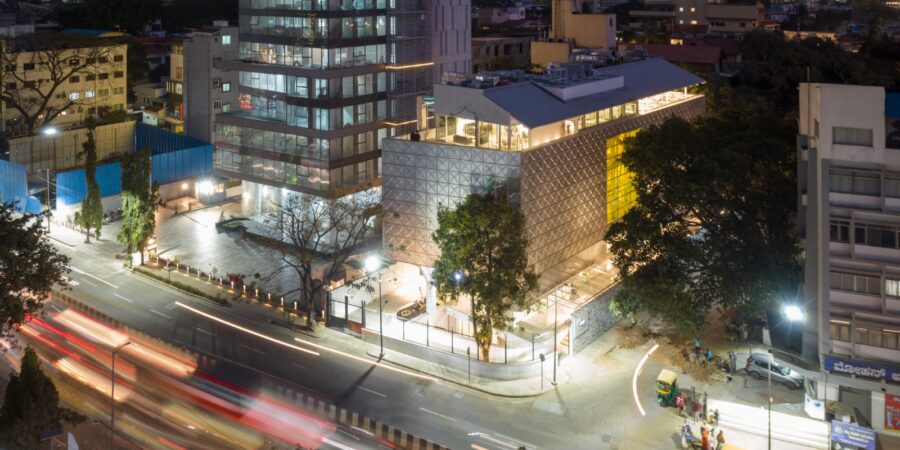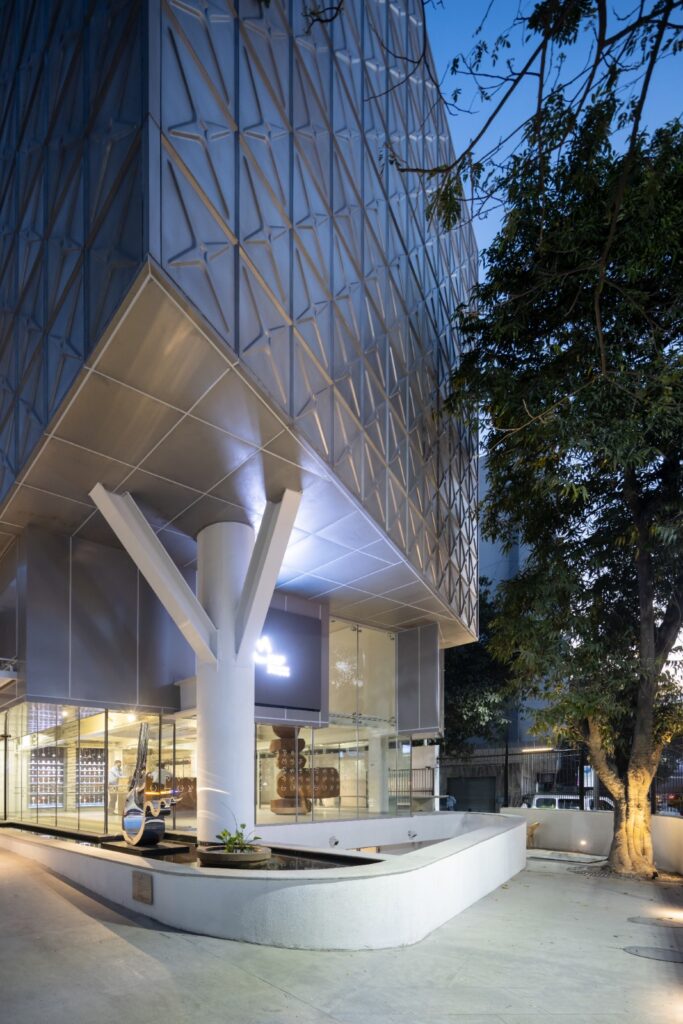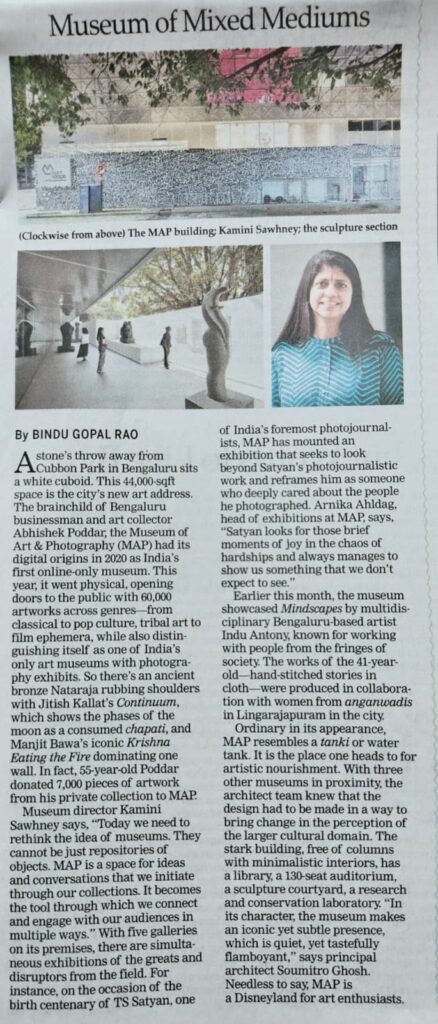The Museum of Art & Photography (MAP) the newest museum in Bengaluru is an ode to the idea of tracing and mapping relationships between artistic disciplines.
Designed by Soumitro Ghosh and Nisha Mathew from Mathew & Ghosh Architects, Bengaluru based architecture firm, MAP located in the heart of the city, a stone’s throw away from Cubbon Park is a new age museum that is proposing to make it an interactive and accessible space for all. The brainchild of businessman and art collector Abhishek Poddar, MAP had its digital origins in 2020 as India’s first online-only museum.
Taking the thought forward, the physical space is also unlike a regular ‘museum.’ While the regular notion of a museum is often a space that is elitist and probably meant for a few intellectuals. MAP however seeks to turn that thought down by creating a space that has a fluid design, educational programming, and welcoming architecture. The massive 44000- square-foot, five-storey space has five galleries, a library, a 130-seat auditorium, a sculpture courtyard, a research and conservation laboratory, a learning centre, a gift store, and a rooftop restaurant. The best part is that there are ramps, wheelchair-friendly counters, easy-to-reach door handles and quiet spaces making this inclusive and accessible.
The Museum design internally predicates art and its showcase over spatial dramatics to present generic gallery spaces that insulate precious art and artefacts from ultraviolet light. The exterior structure of the building has a mild steel framing in reinforced concrete and is built to resemble a water tank like structure. This means that the building and its spaces are free of columns and the focus is on maintaining transparency, and opacity in the structure. The generic nature of space as the enclosure with unpredictable nooks and crannies is a space of discovery.
The challenge and opportunity of art in a museum is in its curation. The stronger the curation the greater its absorption and so also the fatigue it creates. Frequent breaks are critical that create the distancing between one gallery and the other with another content and theme.
With three other museums in proximity, the architect team knew that the design had to be made in a way that it brings change in the perception of the larger cultural domain and landscape of the city.
Read the full story that first appeared in The New Indian Express dated August 13, 2023 here:


